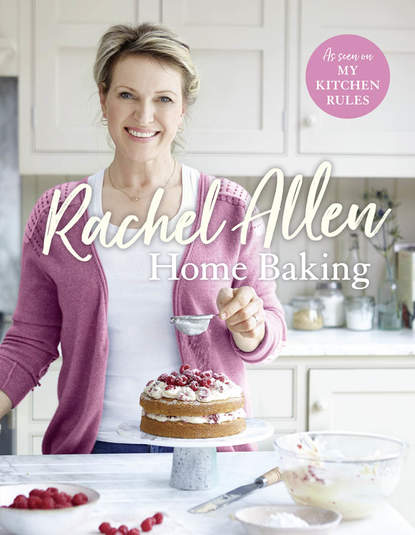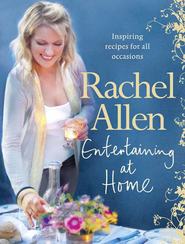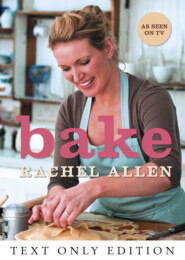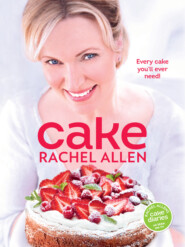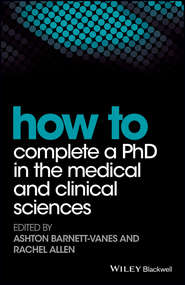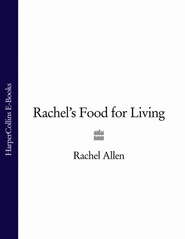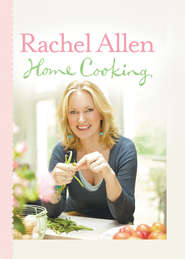По всем вопросам обращайтесь на: info@litportal.ru
(©) 2003-2024.
✖
Home Baking
Настройки чтения
Размер шрифта
Высота строк
Поля
A range of recipes using yeast appear in the book, and it’s worth understanding the types of yeasts available, as they are not all used in the same way. Fresh yeast can be bought from some bakers and, if properly wrapped up, lasts in the fridge for up to a month. Fresh yeast has to be activated by adding it to lukewarm milk or water and leaving it for 5 minutes or until it starts to become creamy. It is then added to the flour. You can also buy two kinds of dried yeast from supermarkets: active dried yeast is used in exactly the same way as fresh yeast, by first mixing it with liquid. Active dried yeast is twice as strong so you need to use half the amount compared to fresh yeast. Fresh fast-action, or easy-blend, dried yeast is mixed straight into the flour without pre-activating it. Most of the recipes in the book call for fresh yeast or active dried yeast.
Equipment (#ulink_d2ca708e-facd-501f-af88-e73fb2e89f10)
Your baking basics can be simply a large mixing bowl, a wooden spoon, a rolling pin, a baking sheet (with a lip on one side) and the most commonly used cake tins: a 20cm (8in) square cake tin and a 20cm (8in) round cake tin – preferably springform with high sides. With those few pieces you can make a variety of cakes and biscuits from this book, including small square cakes such as brownies.
Many biscuits are cut directly from a biscuit dough rolled into a sausage shape, but for others you will need a 6cm (2½in) cutter, either round or shaped. It is also essential to use accurate kitchen scales.
Oven temperatures are given for a standard oven; if you are using a fan oven, reduce the stated temperature by 20°C.
From muffins to smooth icings
You will need muffin and cupcake trays to make those popular small cakes, and both usually require paper cases to fit them.
Other sizes and types of tin appear in the book, including, most frequently: a 25 × 38cm (10 × 15in) Swiss roll tin for making flapjacks, cake squares, traybakes and focaccia; a 900g (2lb) loaf tin for making bread loaves and sweet tea loaves; two 20cm (8in) sandwich tins for making sponge sandwich cakes; and a loose-bottomed 23cm (9in) tart tin for baking savoury or sweet tarts.
A baking tray (with a lip all round) is used for toasting nuts. For melting chocolate you will need a heatproof bowl that can sit just inside the top of a small saucepan. And a palette knife will enable you to create a smooth finish to a buttercream covering.
By hand or faster?
For speedy cake making, an electric beater will help you to cream sugar and butter together quickly – the basis of many cakes. A food processor will also do this for you. Most of the recipes in this book can be made without using a food processor or a stand mixer, although you can use them if you have them. A stand mixer, however, will make short and less tiring work of kneading yeast-based doughs.
(#ulink_5a86ceff-9c6d-59a0-afcf-84b005ea1b3f)
Brûlée meringue cake (#ulink_804ee1ee-50f1-5d12-aced-83bad150d9b2)
Here is a creation from my friend and fellow Ballymaloe Cookery School teacher, Pamela Black, and it is such a fun cake to make. It starts so innocently, then ends with a mound of sugar and a flame! Do the brûléeing part in front of guests to delight them with some cooking theatrics.
Serves 8–10
225g (8oz) butter, plus extra for greasing
225g (8oz) caster sugar
1 tsp vanilla extract
4 eggs
225g (8oz) self-raising flour
225g (8oz) raspberry jam
For the buttercream icing
500g (1lb 2oz) icing sugar
225g (8oz) butter, softened
½ vanilla pod
2 tbsp milk
½ tsp vanilla extract
For the Meringue
6 egg whites
350g (12oz) caster sugar
three 18cm (7in) sandwich tins; piping bag and no. 7 plain piping nozzle; chef’s blowtorch
1. Preheat the oven to 180°C (350°F) Gas mark 4. Grease the sides of the tins, and line the bases with baking parchment. Put the butter in a large bowl and cream it with a wooden spoon until soft, or use an electric beater on slow or a food processor.
2. Add the sugar and vanilla extract, and beat until light and fluffy. Beat in the eggs one at a time, adding 1 tablespoon flour each time and beating well after each addition. Sift in the remaining flour and fold in to combine.
3. Divide the mixture between the tins and bake for 20–25 minutes until well risen, golden and springy to the touch. Leave the cakes to cool in the tins on a wire rack for 2–3 minutes, and then turn them out on the rack to cool completely.
4. While the cakes are cooling, make the buttercream icing. Sift the icing sugar into a large bowl and add the butter. Beat until smooth using an electric beater or a wooden spoon. Split the vanilla pod lengthways and scrape out the seeds into the bowl. Add the milk and vanilla extract, and beat until the mixture is light and fluffy.
5. Put one cake on a plate and spread it with half the jam and a thin layer of buttercream. Put another cake on top and spread with the remaining jam and another layer of buttercream. Top with the remaining cake. Spread the remaining buttercream over the top and sides of the cake, smoothing the sides as you go. Leave in a cool place for at least 1 hour before you make the meringue.
6. Put the egg whites in a clean, grease-free bowl and whisk with an electric beater until they form soft peaks, or use a food processor. Whisk in the sugar until it forms very stiff peaks – this can take 15–20 minutes.
7. Fill the piping bag with the meringue mixture and, starting at the bottom of the cake, pipe 2.5cm (1in) blobs or discs on to the icing. Turn the cake clockwise by 2.5cm (1in) after each piping and repeat the process until the cake is completely covered with meringue.
8. Using a blowtorch according to the manufacturer’s instructions, move it over the meringue in a circular movement until the surface of the meringue is a light golden colour. Serve.
Chocolate, honey and hazelnut cake (#ulink_5d31fdf1-87a3-5d3c-b201-24d133f7b70f)
This incredible cake is gluten-free because it’s made from ground hazelnuts instead of wheat flour. It’s rich, nutty, chocolatey – and absolutely irresistible.
Serves 8
100g (3½oz) butter, plus extra for greasing
175g (6oz) dark chocolate (55–62% cocoa solids), roughly chopped
90g (3¼oz) honey
4 eggs, separated
100g (3½oz) hazelnuts, with skins
salt
For the chocolate honey glaze
100g (3½oz) dark chocolate (55–62% cocoa solids), roughly chopped





